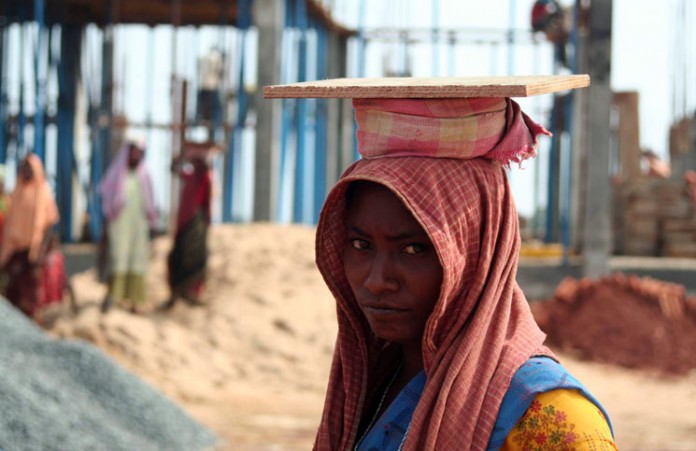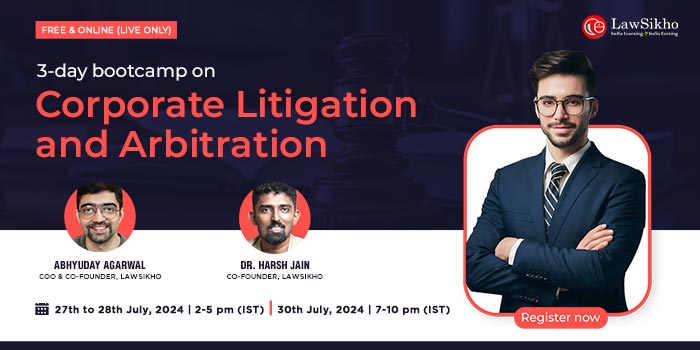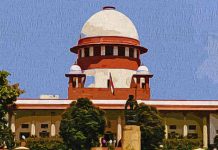This article is written by Devansh Sharma, Nikunj Arora and has been updated by Naincy Mishra. This article deals with a detailed explanation of Article 15 of the Constitution, its various aspects, evolution and related judicial pronouncements.
It has been published by Rachit Garg.
Table of Contents
Introduction
The Constitution of India guarantees various rights to its citizens, including no discrimination on account of religion, race, caste, or place of birth. Part III of the Indian Constitution establishes this right under the heading of Fundamental Rights. In India, religion and caste-based discrimination have existed for a very long time. In every part of India before independence, discrimination was evident, whether through untouchability or the division of upper and lower castes. Discrimination still exists today; however, the consequences of such discrimination are much more severe and punishable.
According to the 8th Schedule of the Constitution, India recognises a total of 22 languages. But in reality, there are more than 1,500 languages spoken in India other than the official languages of Hindi and English. The Hindi language is spoken by roughly 44.63 percent of the Indian population. Diversity often leads to differences of opinion, and those differences of opinion sometimes lead to discrimination. A major source of discrimination in India is caste discrimination, which still occurs in some parts of the country. Traditionally, the general divide in society was between the lower castes and the upper castes. There had been untouchability for the lower castes. India has now outlawed this rule because it is so unacceptable.
The stories of women being beaten up for drawing water from wells, people being harassed if their shadow falls on other men, devotees being stopped from entering the temple, and being beaten up for touching idols of gods have become a common affair in newspaper headlines whenever I go through one. It seemed to me like a nightmare that has compelled me to look into the provisions in force that prohibit such differentiation.
A number of cases involving discrimination are based on a variety of variables. Caste and religion have been the major causes of discrimination in India for most of its history. The practice of discriminating on the basis of gender is not new either. This includes discriminating against women as well as LGBTIQA+ individuals. Decriminalising Section 377 of the Indian Penal Code, 1860, in 2018 marked the first step in recognising the LGBTIQA+ community. A discriminatory act causes emotional pain, mental distress, and social isolation. Article 15 of the Constitution has been widely needed and has existed ever since it came into force. There are five clauses in Article 15 that specify types of discrimination that are strictly prohibited.
This article examines the provisions of Article 15 of the Indian Constitution, which protects its citizens from discrimination of any kind. Considering India has so many religions, beliefs, languages, cultures, etc., and has such a diverse population, there is no doubt that discrimination can occur in such a country. Thus, the purpose of Article 15 is to protect the rights and interests of citizens.
Scope of the word ‘discrimination’
Discrimination occurs when you are distinguished or treated in a less favourable manner than another person under similar circumstances, or if you are disadvantaged by being placed on equal footing with another under different circumstances, for example, because you are disabled or pregnant. This action cannot be reasonably and objectively justified.
Article 15 restricts discrimination on the grounds of:
- Religion – It means that a state or any group cannot discriminate against a person on the basis of religion from accessing any public place or policy.
- Race – A person should not be discriminated against on the basis of his/her ethnic origin. For example, a citizen of Afghan origin should not be discriminated against by those of Indian origin.
- Caste – It prohibits the discrimination on the basis of caste. Generally, it is to prevent atrocities committed by the upper caste.
- Sex – No individual should be discriminated against on the basis of their gender. For example, discriminating against females, transgenders, etc.
- Place of birth – The place where an individual is born should not become a reason for discrimination.
Often, the word ‘Discrimination’ is perceived to be contrary to the principles of equality. Individuals tend to confuse discrimination with a breach of equality. Can something that is disadvantageous and against the general classification of the individual be taken as discrimination? The answer remains ‘NO’. The Supreme Court has observed in the following cases that every classification does not constitute discrimination in the first place.
In the case of Kathi Raning Rawat v. State of Saurashtra (1952), special courts under the Saurashtra State Public Safety Measures Ordinance 1949 were set up by the state of Saurashtra to adjudicate on the matters of Section 302, Section 307 and Section 392 read with Section 34 of the Indian Penal Code (IPC), 1860. The contention brought before the court was that these provisions are discriminatory for the residents depending upon the territory.
The court stated that all kinds of legislative differentiation are not discriminatory. The legislation did not refer to certain individual cases but to offences of certain kinds committed in certain areas, and hence it is not discrimination.
In another significant case of John Vallamattom v. Union of India, (2003), the petitioners were prevented from bequeathing property for religious and charitable purposes by the Indian Succession Act 1925. The petitioner contended it to be discriminatory against the testamentary dispositions by a Christian.
The Supreme Court stated that the Act was to prevent people from making injudicious death-bed bequests under religious influence but had a great impact on a person desiring to dispose of his property upon his death. Hence, the legislation is clearly discriminatory, as the properties of any Hindu, Muhammadan, Buddhist, Sikh, Jain or Parsi were excluded from the provisions of the Act. Further, the respondents could not provide any acceptable reasoning as to show why the provision regulates religious and charitable bequests of Christians alone.
When the concept that a reasonable classification can never amount to discrimination is clear, we suddenly get stuck by the idea of reservation. Is it not discriminatory to differentiate between two candidates who are appearing for the same post or exam with the same qualifications? What allows provisions for such differentiation to be made?
Overview of Article 15 of the Indian Constitution

In India, Article 15 protects citizens from racism, untouchability, and various forms of discrimination based on religion and gender. In India, caste discrimination is the type of discrimination that is most prevalent. Discrimination and untouchability are a result of caste division. Untouchability is now an offence in India; however, in some areas due to a lack of legal awareness and caste beliefs, people still face untouchability. It is assumed that those born in lower castes are considered lower than those born in higher castes, and this leads to discrimination against them. Such discrimination is described as an offence in Article 15 and those found guilty of the offence are punished. In order to facilitate the economic advancement of the socially and economically backward sections of India’s citizens, the Constitution of India provides reservations to the Scheduled Castes, Scheduled Tribes, and Other Backward Classes.
Interestingly, in 2019, the Central Government introduced the 124th Constitution Amendment Bill (2019) in Parliament in order to provide reservations to economically weaker sections (EWS). The bill was intended to provide a 10% reservation in higher education and government employment to EWS. Consequently, the Constitution (One Hundred and Third Amendment) Act, 2019 was passed and thus, Article 15 was amended to include clause (6). This was done to provide equal opportunity to EWS, as they had been disadvantaged economically and socially due to pre-independence discrimination and difficulties.
Besides discrimination on the basis of backwardness, Article 15 also addresses gender-based discrimination. For a long time, women have been fighting for their rights and opportunities, and slowly, these provisions are gaining recognition despite the fact they have existed since the 1950s. Thus, the scope of this article extends to women too, which provides them with special protection in order to achieve the aforementioned objective of equal rights.
Clause 1 of Article 15 of the Indian Constitution
As stated in Article 15(1), there shall be no discrimination against any citizen of India on the basis of religion, race, caste, gender, or place of birth. Despite the fact that castes are divided into scheduled castes/tribes, backward classes, no one should be discriminated against. As a broad term, discrimination has many aspects, and it is unjust. People of lower castes, like Dalits have been the target of unjust treatment in numerous instances. Based on the survey by the Hindu, there has been an increase of 6% in unfavourable bias towards Dalits since 2009.
There are laws to protect them, including the Scheduled Castes and Scheduled Tribes (Prevention of Atrocities) Act, 1989, but still, cruelty occurs towards the SCs/STs in certain parts of the country. In some situations, the lower caste people face many troubles, such as women being raped and people being killed as a result of protests and caste-related conflicts. In September 2020, a gang rape case took place in Hathras, a district in Uttar Pradesh, in which a 19-year-old Dalit girl was raped (Satayama Dubey & Ors v. Union of India, 2020).
Additionally, Dalits are also often targeted for atrocities for no apparent reason. For example, there was a case where the houses of 18 Dalits were set on fire in April 2010. The incident occurred because of a dog barking at a higher-class man. Several laws have been passed over the years to protect the rights of people, but discrimination still exists. One of the major reasons for this can be a lack of appropriate punishments and an inability of people to adapt. Only when people agree completely with what is enacted in law will we be able to end discrimination against them.
The scope of this clause is very wide. It is levelled against any State action in relation to the citizens’ rights, be it political, civil or otherwise. The prohibition of discrimination on grounds such as religion or caste identities does not deny the pluralism of Indian culture but rather preserves it.
Religion
Article 15(1) ensures that religion shall not be the ground for any disqualification or discrimination in any public matter. In State of Rajasthan v. Pratap Singh (1960), an order under Section 15 of the Police Act 1861 was under question, which declared certain areas as ‘disturbed areas’ and made the inhabitants of those areas bear the cost of posting additional police. It was held that the provision violates Article 15(1) insofar as it exempts the ‘Harijan’ and ‘Muslim’ inhabitants of those areas from such liability, without assigning any reason for the exemption.
In Danial Latifi v. Union of India (2001), the Apex court upheld the validity of the Muslim Women (Protection of Rights on Divorce) Act, 1986, holding that the liability of the husband to provide “reasonable and fair provision and maintenance” under Section 3(1)(a) of the Act is not limited to the exact period. If it is permitted to be so limited, then the Act would violate Article 15 as it excludes the Muslim women alone on the basis of their religion from getting maintenance in reasonable provision from their divorced husband.
Race
Due to the vast geographical diversity in India from north to south and from east to west, certain regions of the country face discrimination based on their race or ethnicity. The first step towards abolishing racial discrimination was taken by the passing of the Criminal Law (Removal of Racial Discrimination) Act 1949 on the eve of the commencement of the Constitution. By this Act, the privileges which were enjoyed by the Europeans and Americans under the British regime, relating to matters of criminal law and procedure, were taken away.
In Sanghar Umar Ramval v. State of Saurashtra (1952), a law of Saurashtra was under consideration which restricted the movement of certain communities by insisting on their reporting to the police daily. It was held to be invalid because it was a discrimination based on race.
Caste
The word ‘caste’ is not an indigenous Indian term. It comes from the Portuguese word ‘casta’ which has various meanings. In the Indian context, it may be taken to mean a ‘Jati’ i.e., a group having a common name, common origin, hereditary membership and which is linked to one or more traditional occupations. It imposes certain obligations and restrictions on its members in matters of social intercourse and demonstrates having a more or less determinate position in a hierarchical scale of ranks. In Ashok Kumar Thakur v. Union of India (2008), it was held that ‘caste’ is often used interchangeably with the term ‘class’ and it can be called one of the basic units in the social stratification.
In Balaji v. State of Mysore (1963), it was held that where the persons in whose favour a discrimination is made as to belonging to the backward classes under clause 4 of Article 15, the discrimination will be void if it is solely based on caste consideration and not on economic or social backwardness. Moreover, in Rajendran v. State of Madras (1968), it was held that if the members of the caste as a whole were socially and educationally backward, then the reservation in favour of a caste under Article 15(4) would not be unconstitutional.
Gender
The Article guarantees that the State shall not discriminate between citizens only on the grounds of sex while simultaneously retaining an exception in Article 15(3) to enable the State to make ‘special provisions’ for women. It is important to note that neither a male nor a female can be discriminated against, as per the general law under Article 15(1). In the case of Rani Raj Rajeshwari v. State of UP (1954), a provision under the UP Courts of Wards Act (1879) was under question wherein, a male proprietor could be declared incapable of managing the property on five grounds mentioned therein. Moreover, he was also given an opportunity of showing cause as to why such a declaration should not be made, while a female proprietor could be declared incapable of managing her property on any ground, and there was no opportunity to even show cause. This provision was held to be discriminatory.
In Navtej Singh Johar v. Union of India (2018), Justice DY Chandrachud noted that Article 15 prohibits discrimination, direct as well as indirect, which is founded on a stereotypical understanding of the role of sex. It was observed that the usage of the word ‘sex’ in Article 15(1) encapsulates stereotypes that are based on gender. It was observed that sexual orientation is also covered within the meaning of ‘sex’ in Article 15(1) because (i) non-heterosexual relationships question the male-female binary and gendered roles that are attached to them; and (ii) discrimination based on sexual orientation indirectly discriminates based on gender stereotypes, which are prohibited by Article 15. Therefore, a law that directly or indirectly discriminates against an individual based on sexual orientation is constitutionally suspect. It was also pointed out that the common thread that runs through the grounds mentioned in Article 15 is that they impact the personal autonomy of an individual.
Place of birth
This ground in effect declares ‘provincialism’ to be unlawful. It says that in no public matter, there can be discrimination by any authority against a citizen of India on grounds of his birth in any particular part of India. In State v. Husein (1951), Section 27(2A) of The Bombay Police Act (1951) was held to be violative of Article 15(1) and thus void on the ground that it discriminates between persons born in Greater Bombay and those born outside Greater Bombay.
Clause 2 of Article 15 of the Indian Constitution
Under Article 15(2), it is prohibited for an Indian citizen to discriminate against another Indian citizen on the grounds outlined in Clause (1). Article 15(2)(a) provides that citizens should not be prevented from accessing public places, such as shops, restaurants, hotels or any other place which is open to the general public solely because of their religion, race, caste, gender, place of birth, or any other similar basis.
Article 15(2)(b) states that no individual can restrict another individual on the basis of religion, race, caste, gender, or place of birth from using septic tanks, wells, roads, or any other public facility maintained by the state funds or specifically designated for public use. This provision explains how discrimination should be prevented instead of being practiced. Any discrimination mentioned above shall be prohibited and unlawful. It is illegal and unjust to restrict or prevent access to a public place established by the state exclusively for public use.
Clause (2) of the present Article is levelled not only against the State but also against the private individuals who may be in control of the public places mentioned in the clause. It is worth noting that Article 15(2) is not self-executing, i.e., the provision will remain nugatory unless legislation is made in order to make it operative. Importantly, the Protection of Civil Rights Act 1955 has made a violation of Article 15(2) punishable only if exclusion from such places by a private individual is committed on the ground of untouchability. Thus, it is unknown what will happen if a citizen is excluded on the grounds of his race, caste or sex from using a well dedicated to the public by another private person. Moreover, an action under Article 32 is also difficult to succeed because the Apex Court has held that remedy is only against State action and not against private individuals.
Clause 3 of Article 15 of the Indian Constitution
Article 15(3) provides that the state may continue to make laws that provide special provisions for women and children. In Yusuf Abdul Aziz v. State of Bombay (1954), an adultery charge was filed against the appellant under Section 497 of the Indian Penal Code, 1860. In this case, the main issue was to determine whether Section 497 of the Indian Penal Code, 1860, is in contradiction with Articles 14 and 15 or not. This case presented the argument that Section 497 of the Indian Penal Code, 1860, dictates that adultery can only be committed by men and that women cannot even be punished as abettors. As a result of this argument, there was a contradiction with regard to whether this was in violation of Article 15, which prohibits discrimination based on gender. However, it was further stated that Clause (3) of Article 15 clearly states that nothing contained in Article 15 limits the state’s ability to make special provisions for women and children.
Additionally, it was argued that Article 15(3) should not shield women from the threat or commission of crimes. Additionally, in this case, the appellant was not even a citizen of India. Thus, the appellant, in this case, could not invoke Articles 14 and 15 because the fundamental rights can only be granted to Indian citizens. Therefore, the appeal was dismissed.
Further, in Paramjit Singh v. State of Punjab (2009), the petitioner was elected as a Panch for a seat that was reserved exclusively for the women of Scheduled Castes. The petitioner challenged the election of respondent number 5 as Sarpanch, on the grounds that she was not eligible to contest for the elections of Sarpanch which were reserved for the SCs and not SCs (women), because the respondent was elected as Panch for Gram Panchayat only against the reserved seat for SCs (women). It was ruled that, if the seat of the Sarpanch for a village was reserved for Scheduled Castes, then both men and women belonging to those categories could stand for election for the Sarpanch’s post because the eligibility was basically being a Scheduled Caste and representing the constituency as Panch.
This clause is in the nature of an exception to clause (1) and provides that notwithstanding clause (1), it would be permissible for the State to make “special provision for women and children”. This exception is not confined to beneficial provisions only and any special provision that the State considers necessary in the interest of women, whatever its nature may be, would be valid under this clause. Thus, Article 15(3) can be considered a charter for affirmative action in favour of women and children.
In Govt. of A.P. v. P.B. Vijaykumar (1995), it was held that Article 15(3) also sustains reservation for women because it is a special provision to support women with a view of promoting equalisation of their status. In this case, a provision relating to the Andhra Pradesh State and Subordinate Service Rule, 1996 was under question which provided that in cases where women and men are equally suited, preference is to be given to the women, ‘other things being equal’ in order to select for direct recruitment to an extent of at least 30% of certain specified posts.
In Vijay Lakshmi v. Punjab University (2003), the reservation of posts for women in women’s colleges and hostels was held valid.
National Commission for Women – By the National Commission for Women Act 1990, the Indian Government has set up a Commission to examine and report on “all matters relating to the safeguards provided for women under the Constitution and other laws”, including suggestions for improving the existing safeguards.
Special provision for Women and Children
The thought of this legislation being carte blanche (complete freedom to act as one wishes) to impose differential benefits ostensibly to the advantage of women at the cost of burdening men may ponder in your mind. But it is justified as it compensates for the early injustice met by women and children at the hands of a male-dominated society. Right to free and compulsory education for children under the age of 14 years, Section 56 of the CPC 1908, the Maternity Benefit (Amendment) Act 2017, etc. are some of the best examples of such provisions.
In the case of Rajesh Kumar Gupta v. State of Uttar Pradesh (2005), the U.P. government made provision for providing a reservation BTC training programme as follows:
- 50% of the candidates to be selected shall be from the Science stream,
- 50% from the Arts stream,
- further 50% would be female candidates,
- And the other 50% would be male candidates.
This reservation format was contended to be arbitrary and violative of Article 15. The Apex Court held that the reservation format introduced was not warranted by the provisions of the Indian Constitution, being over and above the constitutional reservations in favour of backward classes.
Whereas in Union of India v. K.P. Prabhakaran (1997), the railway administration took the decision to appoint enquiry cum reservation clerks in four metropolitan cities, i.e., Mumbai, Delhi, Kolkata, and Chennai. The decision stated that the post would be held by women only. The court rejected the contention of the government, urging that this provision is protected under Article 15(3). It said that Article 15(3) cannot be read as a provision or as an exception to what is guaranteed under Article 16(1)(2).
These cases clearly explain the applicability of the phrase ‘Special provisions for women and children’ in matters ranging from reservation to education and employability. But what if there are laws that differentiate or prefer women over men? Can it be called discrimination?
In the case of Girdhar v. State (1953), the petitioner was convicted under Sections 342 and 354 of the Indian Penal Code. The petitioner claimed that, as there are no provisions relating to assault against men with the intention to outrage his modesty, providing such laws for women is discriminatory. Section 354 is contrary to Article 15(1). The petition was dismissed, stating that the law was in consonance with Article 15(3).
In Choki v. The State of Rajasthan (1957), Mt. Choki and her husband conspired and murdered their child, the application for bail was presented on the plea that she was an imprisoned woman, with no one to look after her young son. The judge rejected the application saying that there were no extenuating circumstances and the Constitution has no provisions under which leniency could be shown to women on account of their sex. The same was challenged before the Supreme Court.
It was held that Article 15(3) talks about special provisions for women and children. And under the light of this provision, Mt. Choki was granted bail as she was a woman and there is a young child dependent on her; thus, it became necessary for the state to protect the rights of the child.
Women and sexual harassment under Clause 3 of Article 15 of the Indian Constitution
Clause 3 of Article 15 also allows the government to frame special laws regarding the protection of women and the abolition of sexual harassment. Sexual harassment is a clear violation of the fundamental rights of equality guaranteed under Article 14(2) and Article 15(3). The sexual harassment of women that had become a frequent story of everyday newspapers was dealt with by the Supreme court in the famous Vishaka & Ors v. State Of Rajasthan (1997) and this case led to the formulation of what we call as the Vishakha guidelines.
Clause 4 of Article 15 of the Indian Constitution
Article 15(4) stipulates that nothing in Article 15 or Article 29(2) prevents the state from creating special provisions for socially and educationally backward classes of citizens, or the STs/SCs. There were two major instances that motivated the inclusion of such a clause in Article 15. First, in the State Of Madras v. Srimathi Champakam (1951), it was the government of Madras that issued an order setting out how seats would be allocated in medical and engineering colleges based on a student’s community and caste. Upon examination, it was determined that the order violated Clause (1) of Article 15 which stated that seats were allotted based on castes of students and not merit. The seven-judge bench then overturned this order that allotted seats based on caste and not merit.
Secondly, in Jagwant Kaur v. State of Maharashtra (1952), the construction of a colony solely for Harijans was considered to be violative of Article 15(1). Clause (4) under Article 15 was thus introduced for the purpose of helping the socially and educationally disadvantaged citizens without violating any other provisions.
Furthermore, Article 29(2) [which is also mentioned under Article 15(4)] indicates that no citizen of India is discriminated against when applying for admission to a state-run educational institution or receiving financial aid out of state funds based on their religion, caste, race, or language. Therefore, Article 15(4) is not an exception but rather a special provision for socio-economically and educationally backward sections of society.
It was held by the Supreme Court in A. Periakaruppan v. State of Tamil Nadu (1971) that classifying socially and educationally backward classes on the basis of caste was in violation of Article 15(4). According to the Court, it was, however, necessary for the conditions of such a class of people to change, as that was the main reason for providing them with a reservation. In Balaji v. State of Mysore (1963), the Mysore Government issued an order and decided to provide 68% reservation for students belonging to backward classes for their admissions in medical and engineering colleges. The government left only 32% of reservations for students getting admission on merit. Because of this reservation, students with higher marks than those in the reserved category failed to obtain a seat. In the opinion of the Court, the categorisation of backward and even more backward classes was not justified under Article 15(4). In order to be considered ‘backward’, both socially and educationally backward can be included. Clause (4) of Article 15 does not talk about caste but class. Additionally, the Court stated that reserving 68% of seats in medical and engineering schools would constitute constitutional fraud, as Clause (4) of Article 15 prohibits exclusive provisions for backward classes. Therefore, reservations could not exceed 50%.
The Supreme Court in State of AP v. USV Balaram (1972) held that caste should not be a determining factor in whether a person belongs to a backward class. The backward class shall be defined as an entire caste that is both socially and academically backward. Further, the Supreme Court stated that in the event a backward class improves educationally and socially to such an extent that it no longer requires special aid from the state, the list of backward classes will automatically be updated.
In the State of UP v. Pradeep Tandon (1974), the Apex Court held that providing reserved seats to students who live in rural areas was unconstitutional. It cannot be justified under Clause (4) of Article 15. In this case, the state of Uttar Pradesh was providing reservations in medical colleges to students from rural areas, hilly regions, and students from Uttarakhand. According to the Supreme Court, reservations for students from hill regions and Uttarakhand were valid since the people from these areas are socially and educationally backwards due to a lack of awareness and inadequate facilities for education. The Court stated that the rural area does not represent a backward social or educational status, and poverty does not equate to backwardness in rural areas.
Clause (4) provides for ‘special provision for the advancement of any socially and educationally backward classes of citizens or for the Scheduled Castes and the Scheduled Tribes’. Article 15(4) was inserted by the Constitution (First Amendment) Act in the year 1951. The amendment was introduced in order to enable the government to make special provisions for backward classes. The special provision may be by way of reservation of seats in public educational institutions. This amendment brings Article 15 and Article 29 in line with Articles 16(4), 46 and 340.
This clause strengthens the concept of promoting the socio-economic empowerment of the disadvantaged. Social equality is realised through the facilities and opportunities given to them to live with dignity and equal status in society. Economic equality also gives empowerment as a measure to improve excellence in every walk of life. This being the objective, what is required to be kept in mind while adjudging the constitutionality of the scheme/rule of reservation is the equality and adequacy of representations as per the percentage prescribed by the rules or administrative instructions.
Clause 5 of Article 15 of the Indian Constitution
Article 15(5) states that nothing in Article 15 or Article 19(1)(g) prevents the government from making special legal provisions to improve the lives of socially and educationally backward citizens, as well as those from Scheduled Castes and Scheduled Tribes. In some cases, special provisions may apply to the admission of backward classes, SCs, and STs in educational institutions, either private or public, with or without state funding, except for those minorities identified in Article 30(1). Under Article 19(1)(g) of the Indian Constitution, every citizen of the country is free to follow any profession, trade, business, or occupation of their choice. There is a provision in Article 30 that expresses the right of every minority in India to establish and administer schools of their choice, regardless of whether the minority is religious or linguistic. The Supreme Court decided that Article 15, Clause 5, did not violate Article 14 of the Constitution. Indian citizens are guaranteed equality before the law and equal protection within the territory of the country under Article 14.
This clause was inserted by virtue of the Constitution (Ninety-Third Amendment) Act 2005. The constitutionality of this amendment was challenged in the Ashok Kumar Thakur case (supra), and the Apex Court upheld the amendment so far as it relates to the State maintained institution and aided educational institutions. It was further declared that backward classes falling under the “creamy layer” would not benefit under the amendment, and the state was directed to remove the “creamy layer” backward classes from the ambit of Article 15(5).
It was also observed that the classification on the basis of caste in the long run has the tendency of inherently becoming pernicious, and hence the test of reasonableness has to be applied. It was held that when the object is the elimination of castes and a society free from discrimination based on caste, judicial review within permissible limits can’t be ruled out.
Clause 6 of Article 15 of the Indian Constitution
In 2019, the Parliament enacted the Constitution (One Hundred and Third Amendment) Act, which inserted Clause 6 in Article 15, enabling the State to make special provisions for the advancement of any economically weaker section of citizens, including reservations in educational institutions. It states that such reservations can be made in any educational institution, including both aided and unaided private institutions, except minority educational institutions covered under Article 30(1). It further states that the upper limit of EWS reservations will be 10%.
In the case of Janhit Abhiyan v. Union of India (2022), the Supreme Court, with a 3-2 majority, upheld the 103rd Constitutional Amendment providing EWS reservation. With this, the Court extended the net of reservation benefits to include solely economic backwardness.
Affirmative action

“Affirmative Action” is a phrase that refers to attempts to bring members of underrepresented groups, usually groups that have suffered discrimination, into a higher degree of participation in some beneficial programme. Affirmative action includes some kind of preferential treatment. Another term often associated with affirmative action is “reverse discrimination” which means “a difference in treatment that reverses the pattern of earlier discrimination”.
The principle of affirmative action, also called reverse discrimination, was established and general guidance is provided in Article 46 of the Indian Constitution under Chapter IV (Directive Principles of State Policy). Article 46 directs the State to promote the educational and economic interests of the weaker section of the people with special care, in particular the SC and ST. Moreover, it directs the state to protect them from social injustice and all kinds of exploitation.
The ruling of the Hon’ble Supreme Court in the Champakam Dorairajan case (supra) as discussed above, was reversed by the Constitutional First Amendment of 1951. Regarding ‘affirmative action’, it was held in the case of Indira Sawhney v. Union of India (1992) that, among others, the concept of equality before the law contemplates minimizing inequalities in income, status, facilities and opportunities, not only amongst individuals but also amongst groups of people, securing adequate means of livelihood for its citizens and ensuring the constitutional direction as given in Article 46. Thus, to bring about equality among the unequal, it is necessary to adopt positive measures to abolish inequality. The equalising measures will have to be the same tools by which inequality was introduced and perpetuated. Otherwise, equalisation will not be for the unequal. It was further held that the very concept of equality implies recourse to valid classification for preferences in favour of the disadvantaged classes of citizens to improve their condition, so as to enable them to raise themselves to positions of equality with the more fortunate classes of citizens.
Reservation
On research, we find that Article 15 Clauses (3), (4), and (5) themselves stand as an exception to Article 15 Clauses (1) and (2). Article 15 Clauses (3), (4), and (5) state that the legislature is free to formulate special provisions:
- For women and children,
- For the advancement of any socially and educationally backward classes of citizens or for the Scheduled Castes and Scheduled Tribes,
- Make provision relating to their admission to educational institutions including private educational institutions, whether aided or unaided by the State, other than the minority educational institutions.
Though being the exception to the legislation that forbids discrimination on grounds of sex and caste, this does not come under discrimination. Rather, the term ‘Protective Discrimination’ (also known as Positive Discrimination) is used by the legislators to justify reservation and is defined as the policy of providing an equal platform to the underprivileged and suppressed classes and to lift their status in the society. This system of reservation works on the principles of intelligible differentia (difference capable of being understood).
You might think that, though this theory helps resolve problems of social inequality, what about the sensitive jobs requiring a greater skill set (the medical field, the army, etc.)? Should reservations be allowed in those sectors? Isn’t it wise to keep such fields outside the scope of reservation?
Reservation in Medical Colleges
The thought of not allowing reservations in certain sensitive areas of practice would cause the sector to be monopolized by the privileged classes. Reasoning doesn’t stand on the factor of skills, it stands on the factor of circumstances.
Let us take an example, imagine Ramu is a boy of the underprivileged class whose ancestors and parents have been deprived of education due to discrimination from the upper classes. Ramu has no one in the family to guide him, even then he appeared in medical exams; whereas another boy Vicky, belonging to the upper class, has parents who are well qualified and have been in elite professions. Vicky was constantly guided and mentored by his parents and he also appeared in the exam. Even in such a hypothetical story, our conscience explains that there must be some provisions to place Ramu on equal footing with Vicky to allow him to compete fairly.
In Ajay Kumar v. State of Bihar (2019), the issue was raised regarding the permissibility of providing reservation under Article 15(4) in postgraduate medical courses. The contentions raised by the appellant were that Article 15(4) neither speaks nor permits reservation in educational institutions. While certain preferences and concessions can be given, reservation of seats is beyond the limits of clause (4) of Article 15 of the Constitution of India. The appeal was rejected by the court as special provisions also include reservation provisions and not just preferences and concessions.
On the basis of domicile
After we comprehend the above provisions, the concept of reservation might seem fairer but reservation on the basis of domicile still remains as a pricking concept. What allows the state to formulate laws that differentiate individuals on the basis of domicile, and what needful purpose does this kind of reservation serve?
As we find out, in India the preferential policy is of two types:
- The first is to impart special benefits to the socially and educationally backward classes, scheduled classes and scheduled tribes.
- The second is to provide special benefits to the local ethical groups of the state against the migrants from the other states.
This provision does not count as discrimination under the purview of Article 15 as reservation on the basis of domicile is not one of the grounds of Article 15. Article 15 defines “place of birth” as a ground of discrimination but reservations based on domicile generally fall under “place of residence” which is outside the bounds of “place of birth”. The place of birth and place of residence can be different for a single individual.
Reservation within Reservation
The concept of reservation within the reservation is a condition where reservation is provided to a particular class which is already under a reservation category. For example, A man belonging to a particular community of Schedule castes is entitled to reservation for SCs but what if the community that he dwells from is more underprivileged as compared to the other communities of the SCs category?
Is it justified to make them stand on par with others? Thus the concept of reservation within reservation emerged to uplift those underprivileged communities of the reserved categories. Current examples of such reservations are the Maratha reservation in Maharashtra which already falls under the OBC reservation in Maharashtra, the Jat reservation demands in Haryana, and the 7% reservation of Madiga community under SCs reservation.
Area-wise reservation : Article 371
There are also some special provisions for specific states. There are certain articles in the Constitution of India which provide for special state provisions and allow for the formulation of the area-wise reservation to provide opportunities and facilities for the local people of the state in the matters of public employment and education, and different provisions might be for different parts of the state.
The following table mentions Articles of the Constitution which favour for ‘special provisions’ for different states:
|
Special provisions for the states of Maharashtra and Gujarat. | |
|
Special provisions for the state of Nagaland. | |
|
Special provisions for the state of Assam. | |
|
Special provisions for the state of Manipur. | |
|
Special provisions for the state of Andhra Pradesh. | |
|
Special provisions for the state of Sikkim. | |
|
Special provisions for the state of Mizoram. | |
|
Special provisions for the state of Arunachal Pradesh. | |
|
Special provisions for the state of Goa. | |
|
Special provisions for the state of Karnataka. |
Special provision for the advancement of backward class : Article 15(4) of the Indian Constitution
Coming onto the next clause, i.e. Clause (4) of Article 15 of the Indian Constitution. It allows the state to enact laws and provisions relating to the advancement of socially and educationally backward classes and the scheduled castes and scheduled tribes.
Is Article 15(4) a Fundamental Right
There is no doubt that Article 15(4) belongs to Part III of the Constitution, which contains fundamental rights. However, all of the provisions in Part III do not constitute a fundamental right. Some provisions are merely descriptive and the other provisions are concerned with the effects of fundamental rights on the existing or future laws. There are also provisions for enforcement and implementation of the fundamental rights, in addition to those that provide exceptions to the fundamental rights. It is because of this variety of provisions that the validity of Article 15(4) continues to be questioned. This article falls under the ‘Right to Equality’ which consists of five Articles, i.e., Articles 14 to 18.
In Article 14, the state cannot deny equality to anyone or deny them equal protection of the law. On the other hand, all Indian citizens have equal access to public sector employment under Article 16 of the Indian Constitution. Article 16(1) of the Constitution states that all citizens shall be given equal opportunity to be employed or appointed to any office under the state. It only applies to employment and offices held by the government. State officials may still determine the requirements for the recruitment of government employees. Under Article 17, untouchability is outlawed and punitive measures are imposed. According to Article 18, titles are abolished, and their conferral and acceptance by individuals are prohibited.
On a plain reading of Article 15, one is almost certain to conclude that paragraph (4) constitutes an exception to all the other provisions of that article as well as to paragraph (2) of Article 29. As a result, Article 15(4) permits what Article 29(2) prohibits. As such, Article 15 pertains to the right to equality. This right, when viewed within the context of Article 14, is not the right to uniform or identical treatment. A person has the right to be treated equally with others. In order to determine if such discriminatory practices are compatible with the right to equality, different tests have been devised and used from time to time, such as the reasonable classification, suspicious classification, or classification that lies between the two. It appears that they have not always been able to offer adequate explanations, particularly when it comes to affirmative action or positive discrimination.
Ronald Dworkin has provided an all-inclusive and satisfactory test in this regard in his differentiation between the right to equal treatment and the right to be treated as equal. He believes that the latter right is a fundamental right, whereas the former is merely a derivative right. Equal treatment implies equal respect and concern, while equal treatment means essentially the same treatment for all. But a right to equal treatment is neither feasible nor compatible with identical treatment. An equal concern is therefore essential to the right to equality. Insofar as that concern exists, differences in treatment are appropriate and correspond to a right to equality.
There are some instances when different treatment is compatible with the right to equality. It is only the differences in treatment that are based on differences in concern that violate this right. So, for example, separate treatment on the basis of race, religion, or caste is not inherently unethical as long as respect or concern is shown to everyone regardless of race, religion, or caste. The only time it becomes bad is when it is based on disrespect, contempt or prejudice towards a race, religion or caste. Article 15 prohibits only these kinds of treatment and not every kind of difference of treatment based on the location of birth, race, or caste. Likewise, the article explicitly mentions ‘discriminate against’. Regardless of their religion, race, caste, sex or place of birth, the state may treat them differently, but it may not discriminate against them in these ways. Discrimination is only committed when a person’s religion, race, caste, sex, or place of birth is used as a basis for disrespect, contempt, or prejudice because of a difference in treatment. The difference between treatment on any of these grounds, if not based on disrespect, contempt, or discrimination, will not be discriminatory and, therefore, will not be prohibited by Article 15(1). This rule also applies to Article 29(2).
Therefore, Articles 15(1) and 29(2) prohibit discrimination, prejudicial or condescending treatment based on the grounds mentioned therein. There are special provisions in Article 15(4) of the Constitution regarding the advancement of socially and educationally backward groups or of the Scheduled Castes and Scheduled Tribes. A provision intended to advance any socially and educationally backward class, or to advance SCs and STs, cannot be defined in terms of prejudice, contempt, or insult towards any forward-looking group.
Therefore, Article 15(4) has a distinct scope and function from Articles 15(1) and 29(2). In no way does it overlap with them or diverge from them. Article 15(4), like Articles 15(1) and 29(2), is intended to ensure or promote equality. It is only the latter that prohibits the state from making discriminatory decisions, while the former requires the state to take appropriate steps to eliminate such discrimination. As a result, the Constitution-makers not only envision equity to be achieved by judicial interpretation, but they have also provided a way to achieve it by virtue of Article 15(4) of the Constitution. Therefore, Article 15(4) is equally recognised as a fundamental right. The interpretation of Article 15(4) in relation to Articles 15(1) and 29(2) emphasizes that one does not have to rely on the technicalities, including the non-obstante clause, to justify its existence.
The Amendment
The Mandal Commission Report allowed half of the seats in educational and service matters to Scheduled Tribes, Scheduled Castes, and OBCs, who together constituted around 70% of the total Indian population. This was followed by the judgement given by the Supreme Court of India in the case of Indra Sawhney v. Union of India (1992). As a result of this move, their status improved significantly.
Consequently, it became incumbent upon the legislature to devise policies to improve the economic situation of those belonging to the ‘other category’. Due to this, the legislature passed the Constitution (103rd Amendment) Act, 2019 to give economic backward sections a 10% reservation (as discussed above) in educational and employment institutions in the general category. This amendment inserted Clause (6) to Article 15 and Clause (6) to Article 16 of the Constitution.
The Amendment Act was accused of violating the Indian Constitution’s basic structure. However, it should be noted that all Constitutional provisions are essential, but all of them do not hold the same value. A constitutional amendment may be made so long as it does not alter the basic structure and foundation of the Constitution. In 1973, the term basic structure was first used in Sajjan Singh v. State of Rajasthan (1964), when it was stated as follows:
It is also a matter for consideration whether making a change in a basic feature of the Constitution can be regarded merely as an amendment or would it be, in effect, rewriting a part of the Constitution; and if the latter, would it be within the purview of Article 368?
Only in 1973 was the concept incorporated in the text of the Supreme Court’s decision. Again, in the case of Kesavananda Bharati v. State of Kerala (1973), Justice Sikri described the basics of the Constitution and its structure. Thereafter, several courts examined and worked out this issue in several cases including Indira Nehru Gandhi v. Raj Narain (1975), Minerva Mills Ltd. v. Union of India (1980), etc.
All constitutional amendments since the Kesavananda Bharati case have been tested against this principle and those which adversely affect or destroy the wider principles of the Constitution such as democracy, secularism, equality, or republicanism or alter the Constitution’s identity were considered as bad. The M. Nagaraj v. Union of India (2006) case established a twin test which included the width test and the identity test. These tests must be satisfied in order to determine whether an amendment is valid or not. Essentially, the width test sought to determine the impact an amendment would have on the Constitution and, indirectly, on its core principles. Accordingly, the scope of effect determined the legitimate scope/width of the amendment power, and it also contemplated all of the ramifications of the amendment process to determine if the ‘basic structure’ of the Constitution was threatened. However, the identity test asked whether the Constitution’s identity would remain the same after the amendment.
The Government’s viewpoint
According to Prime Minister Narendra Modi, the act was a landmark event in the history of the nation and a potent measure that ensures justice for all sections of society. Mr Arun Jaitley (Ex-Minister of Finance and Corporate Affairs) explained the reasoning for the 10% quota and said that if two individuals have different backgrounds due to their birth or economic circumstances, they, therefore, could not be treated equally. Unequals cannot be treated equally, he claimed. Moreover, he stated that the Supreme Court’s reservation cap of 50% applied only to caste-based reservations, while the Economically Weaker Section reservation was not affected by it.
According to Thaawarchand Gehlot (Ex-Union Social Justice and Empowerment Minister), similar state laws for the reservation of economically weaker sections of the community were quashed by the courts since the Constitution did not include the concept of economic reservation. Now that the law has been brought into the Constitution by making necessary provisions, the same could not be struck down by the Supreme Court if challenged.
- Socially and educationally backward classes
The phrase “socially and educationally backward classes” under Article 15(4) refers to underprivileged classes of people who have faced discrimination and prejudice from the privileged class. This category includes the class of people who belong to backward classes in society but are not covered under SCs or STs. OBCs have been included under this phrase of socially and educationally backward classes as a category for reservation.
- The limit of reservation
The Supreme Court of India has put up a ceiling limit to the total percentage of reservations that can be provided by the government in Indira Sawhney v. Union of India (1993). In this case, 27% reservation for the ‘Other Backward Classes’ was introduced. The Supreme Court of India put up a limit of 50% as the total percentage of reservations as it was reasoned that allowing the limit to exceed would deprive others of their right to equality. The Apex Court also provided guidelines for exceeding the limit of reservation under extraordinary situations.
- Reservation of more than fifty per cent
There is an upper limit of 50% on the total reservation, but as it was allowed to exceed under extraordinary circumstances. There are 4 states which have breached that limit of 50%:
- Tamil Nadu has 69% reservation with 50% reservation for OBCs;
- Maharashtra has 52%;
- Telangana has 62%;
- Haryana has 67%;
It is done under the extraordinary need for upliftment of certain backward classes.
Recent same-sex marriage judgement
In the recent case of Supriyo@Supriya Chakraborty & Anr. v. Union of India (2023), the petitioners sought that the Special Marriage Act, 1954, which provides for a civil marriage of couples who cannot marry under their personal laws, should be interpreted as gender-neutral so that the same-sex couples can be allowed to marry under it. They argued that the 1954 Act violated Articles 14, 15, 19, 21 and 25 by not allowing a marriage between the same-sex or LBGTQIA+ couples, and sought the words “husband” and “wife” as well as other gender-specific terms to be substituted by the word “party” or “spouse”.
The case was heard by a constitutional bench wherein all the five judges accepted that the time has come to end discrimination against the same-sex couples, however, they could not reach a consensus for giving the queer couples the status of a legally recognised “civil union”. The majority of three judges held that any legal status for such a union can only be facilitated through a law enacted by the Legislature itself.
Referring to the rights of LGBTQ+ persons, the rights unequivocally recognised by the Court are the right to gender identity, sexual orientation, the right to choose a partner, cohabit and to enjoy physical and mental intimacy. However, there is no unqualified right to marriage guaranteed by the Constitution, that qualifies it as a fundamental freedom.
Interestingly, CJI DY Chandrachud, while referring to Article 15 in this judgement pointed out that Article 15 identifies the grounds on the basis of which a person shall not be discriminated against, and those grounds are markers of an individual’s identity. He further said that these identities must be read in their historical as well as social context instead of reading them through the narrow lens of ascription. Nevertheless, the marriage rights of the queer persons could be consented upon by the judges.
Interplay of Articles 14, 15 and 16 of the Indian Constitution
The three Articles together form part of the same constitutional guarantee of equality and thus, supplement each other. While Article 14 is available to all persons, Article 15 is available to citizens only. Moreover, Article 14 guarantees the general right of equality, while Article 15 and Article 16 are instances of the same right in favour of citizens in some special circumstances.
Further, Article 15 is more general in terms than Article 16, the latter being confined to matters relating to employment or appointment to an office under the State. It is also worth noting that Article 16 mentions ‘descent’ and ‘residence’ as additional prohibited grounds of discrimination.
Importantly, Article 14, which guarantees equality before the law would by itself, without any provision in the Constitution, be enough to validate equalising measures. However, to bring about equality among the unequal, it is necessary to adopt positive measures to abolish inequality. The Founders of the Constitution thought it advisable to incorporate other provisions to provide for the amelioration of all aspects of the problem. In Sourabh Choudri v. Union of India (2005), the Hon’ble Supreme Court held that Article 14 is the genus in the sense that Articles 15 and 16 provide for an exception to the equality clause.
Conclusion
Article 15 has always hurdled its way in reaching out to the ones really in need. The condition of the downtrodden has greatly improved since its inception in 1949. It provides a base for each and everything that the legislature needs to formulate provisions to promote harmony in the society. There is an extreme decline in the number of cases of atrocities against the underprivileged classes. Article 15 truly is the guardian of the downtrodden and a shield against discrimination, it has helped the Indian society to stand tall and proud despite such a huge diversity and all kinds of sexism, racism and rigid caste system and will continue to contribute to India’s unity and equality, forever.
It is important to note that Article 15 is very broad and states that there shall be no discrimination based on religion, race, caste, gender, or place of birth in any case. The term discrimination encompasses a wide range of issues and people have been discriminated against in many different ways throughout history. This article is intended to provide equal opportunities for citizens for the protection of their rights. Article 15 primarily seeks to ensure the social, economic, and educational advancement of the economically, socially, and educationally backward classes.
As a result of the existence of Article 15, the reservation has been the subject of the most significant disputes. There are a number of forms of reservation available to the weaker sections of society that cause distress to the general group of people. Reservations are not intended to divide the population into general and reserved categories, but rather to assist the disadvantaged populations of the country. Even during the colonial era and afterwards, untouchability and discrimination were very common in the early centuries preceding British colonialism. The introduction of laws intended to protect the disadvantaged class has, however, resulted in some reduction in inequality. While one cannot say that there has been a complete removal of discrimination, it is reduced. Equality is mentioned in India’s Constitution’s preamble. In Article 15, the term is to be implemented widely throughout the Indian subcontinent.
References:
- Durga Das Basu, Commentary on the Constitution of India, Volume 3, 9th ed.
- https://www.livelaw.in/top-stories/marriage-equality-case-conclusions-directions-of-supreme-court-judgments-240529
Students of Lawsikho courses regularly produce writing assignments and work on practical exercises as a part of their coursework and develop themselves in real-life practical skills.
LawSikho has created a telegram group for exchanging legal knowledge, referrals, and various opportunities. You can click on this link and join:
Follow us on Instagram and subscribe to our YouTube channel for more amazing legal content.












